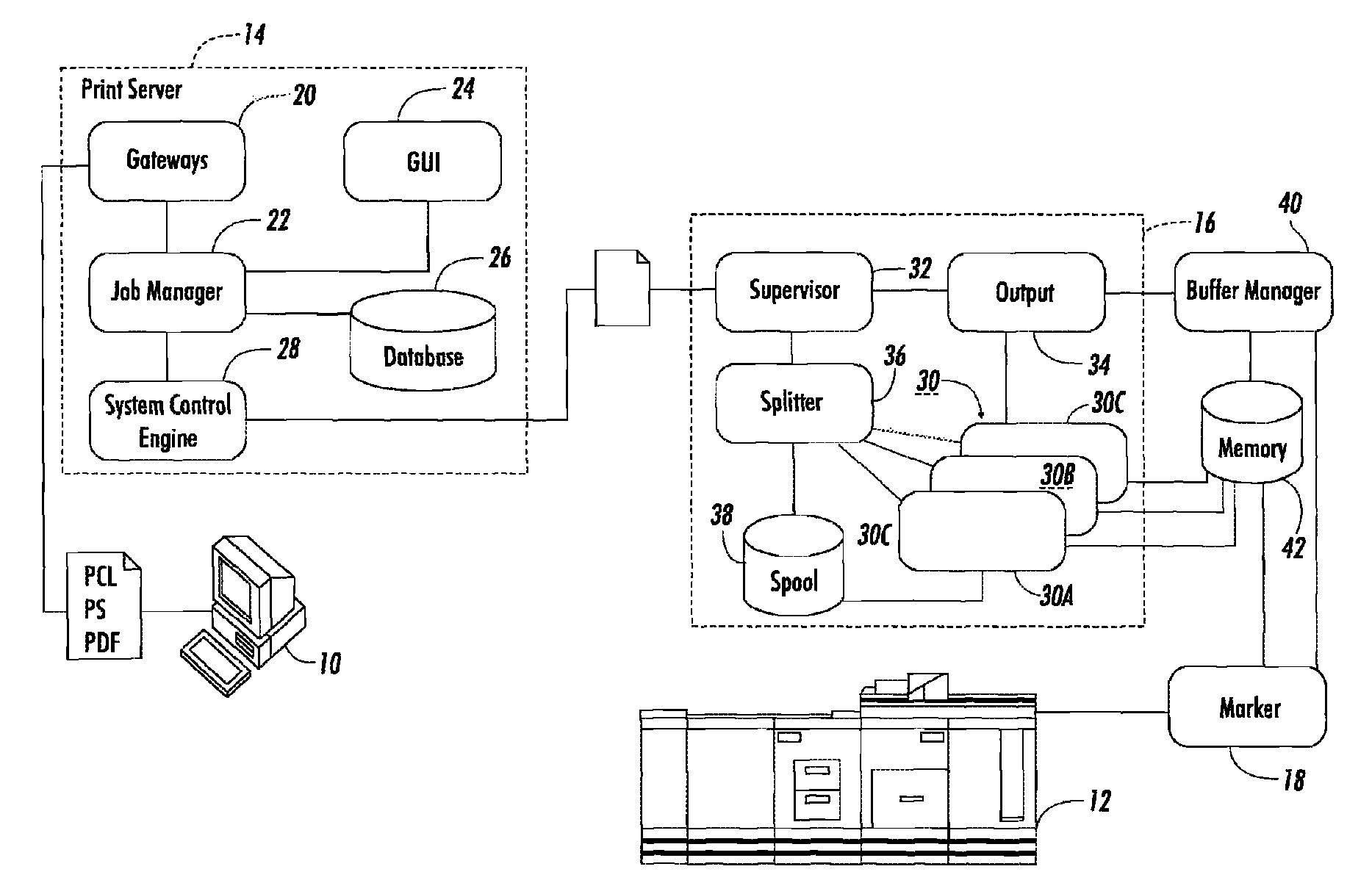Parallel RIP with preamble caching
a parallel rip and preamble technology, applied in the field of parallel rip with preamble caching, can solve the problems of slow and more expensive processors, limited current technology, and inability to optimize software, so as to eliminate all overhead, vastly improve rip efficiency and performance, and avoid overhead
- Summary
- Abstract
- Description
- Claims
- Application Information
AI Technical Summary
Benefits of technology
Problems solved by technology
Method used
Image
Examples
Embodiment Construction
[0021]Embodiments of the disclosure address the continuing need for faster printing systems, particularly systems where every page can be color and different. The system exploits parallelism to facilitate its speed. The subject disclosure may use an intermediate level of parallelism known in the field as “chunk” parallelism, but may equally be applied to page parallelism. These parallel processing systems are improved to efficiently handle large “preambles.”
[0022]With particular reference FIG. 3, it can be seen that a particular print job 300 is split into its preamble 301 and at least one chunk 302 for rasterizing by an assigned RIP node as will hereinafter be more fully explained. While the term preamble, as generally known, refers to a section at the beginning of a document, prior to the main content, the concept, as used here may be more general. Document Structuring Convention conformant PostScript (DSC-PS), being used as the primary example, has all of its common content at th...
PUM
 Login to View More
Login to View More Abstract
Description
Claims
Application Information
 Login to View More
Login to View More - R&D
- Intellectual Property
- Life Sciences
- Materials
- Tech Scout
- Unparalleled Data Quality
- Higher Quality Content
- 60% Fewer Hallucinations
Browse by: Latest US Patents, China's latest patents, Technical Efficacy Thesaurus, Application Domain, Technology Topic, Popular Technical Reports.
© 2025 PatSnap. All rights reserved.Legal|Privacy policy|Modern Slavery Act Transparency Statement|Sitemap|About US| Contact US: help@patsnap.com



